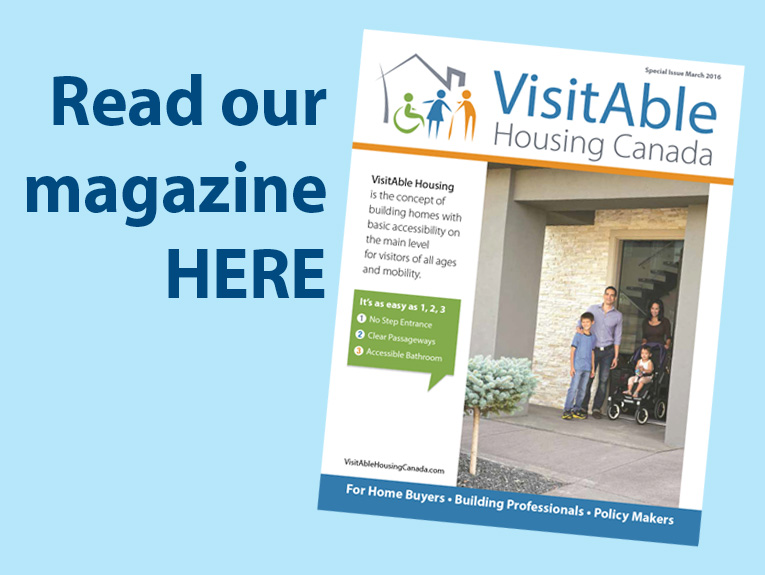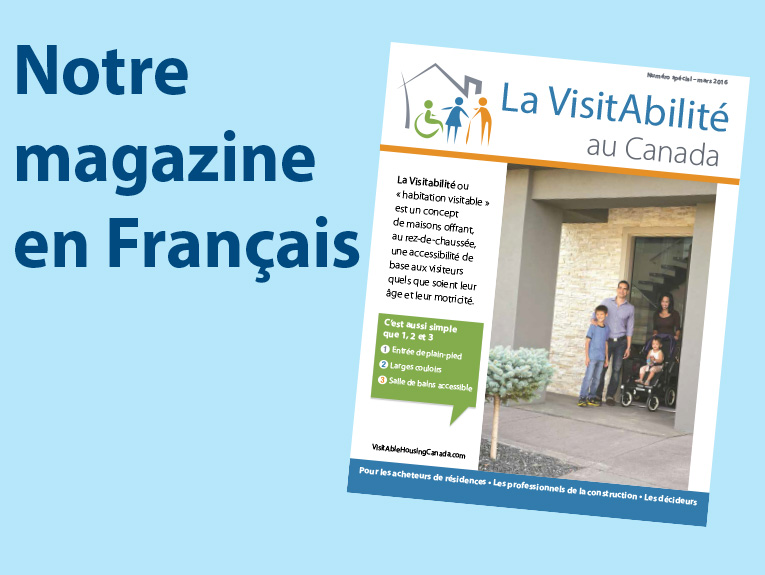Q. Who is VisitAble housing suitable for?
A. Almost everyone! A VisitAble home allows for social visits by people using a mobility device such as a wheelchair or walker. The no-step entrance may also be appreciated by families with young children in a stroller, or anyone who dislikes climbing stairs, including older adults.
As well, a VisitAble home is a practical choice for homeowners who plan to stay in their homes as they age. That’s because it can be cost-effective to upgrade a VisitAble home to incorporate more accessibility features as needed.
Q. Does a VisitAble house have only one floor?
A. A VisitAble house is accessible to visitors on the main floor, but the house itself can include more floors, such as a basement or a second storey.
A zero-step entrance can be built into a house with a basement or crawl space. Depending on the site conditions, this may require a deeper basement to bring the first floor level closer to grade.
Q. What kind of lot is suitable for building a VisitAble house?
A. Almost any kind of lot is suitable to build a VisitAble house. When using the lay of the land to advantage, a sloping lot is often even easier to work with than a flat lot. Site conditions that prohibit making a zero-step entrance are rare.
Q. How expensive is it to build a VisitAble house?
A. Building a VisitAble home can be more expensive, but that does not have to be the case. Additional costs range from a minimal amount to a few thousand dollars.
When building a new house, designing a larger main-floor washroom, plus wider doors and hallways, often doesn’t cost much more. The costs of a zero-step entrance will depend on the lot and house design.
Factors that can affect costs of VisitAble Housing are:
- Topography – land development for no-step entrance
- Design and material used for the basement and foundation walls (e.g., window wells, depth of basement)
- Design of the floor plan that includes wider doors and passageways, and a larger bathroom on the main floor.
Q. Does a VisitAble house have a good resale value?
A. Real estate agents report that VisitAble housing is marketable and has a good market value. Changing demographics makes VisitAble housing even more attractive to an aging population. VisitAble houses may be marketable to a wider age range of house buyers than a house without accessible features.
Selling points of VisitAble housing are:
- Easy access to the house for everyone, including people with mobility difficulties, those with young children in strollers, and those carrying large and heavy items such as furniture
- Aging in place (In Canada, roughly three quarters (71.2%) of senior-led households own their home. Over 80% of older adults prefer homes with fewer stairs.)
- Reduced costs for home renovations at a time of mobility changes
- Reduced risks of fall or injuries on stairs, including when winter ice or snow covers steps
- Modern aesthetic appeal
Q. What’s the difference between a VisitAble home and an accessible home?
A. Accessible housing functions on a continuum. VisitAble housing takes the simplest form, allowing social visits by people using a mobility device.
Adding more accessibility features makes it an accessible house, suitable for a resident with disabilities. The ultimate in accessible housing is universal design, which makes the entire house accessible for everyone.



